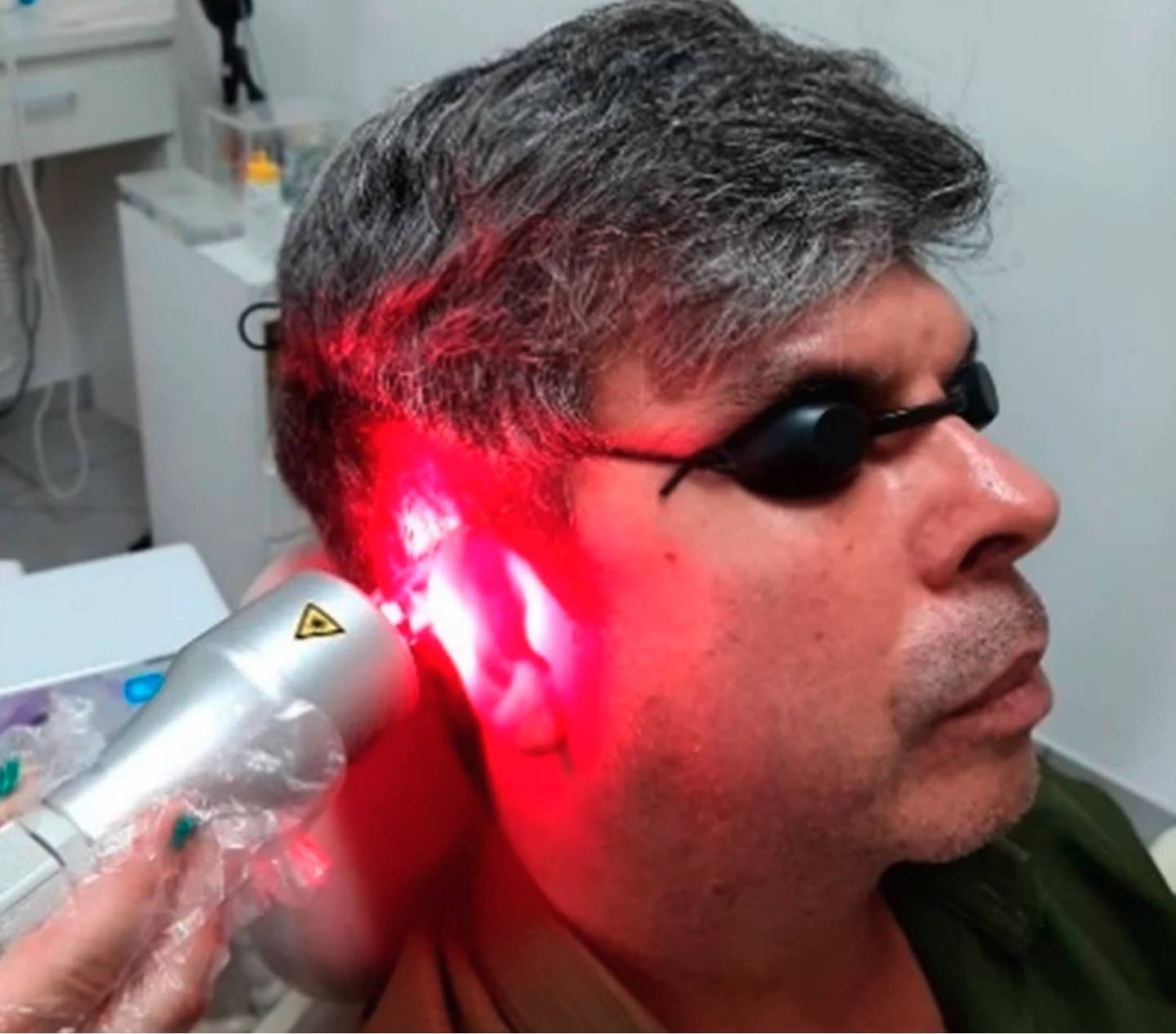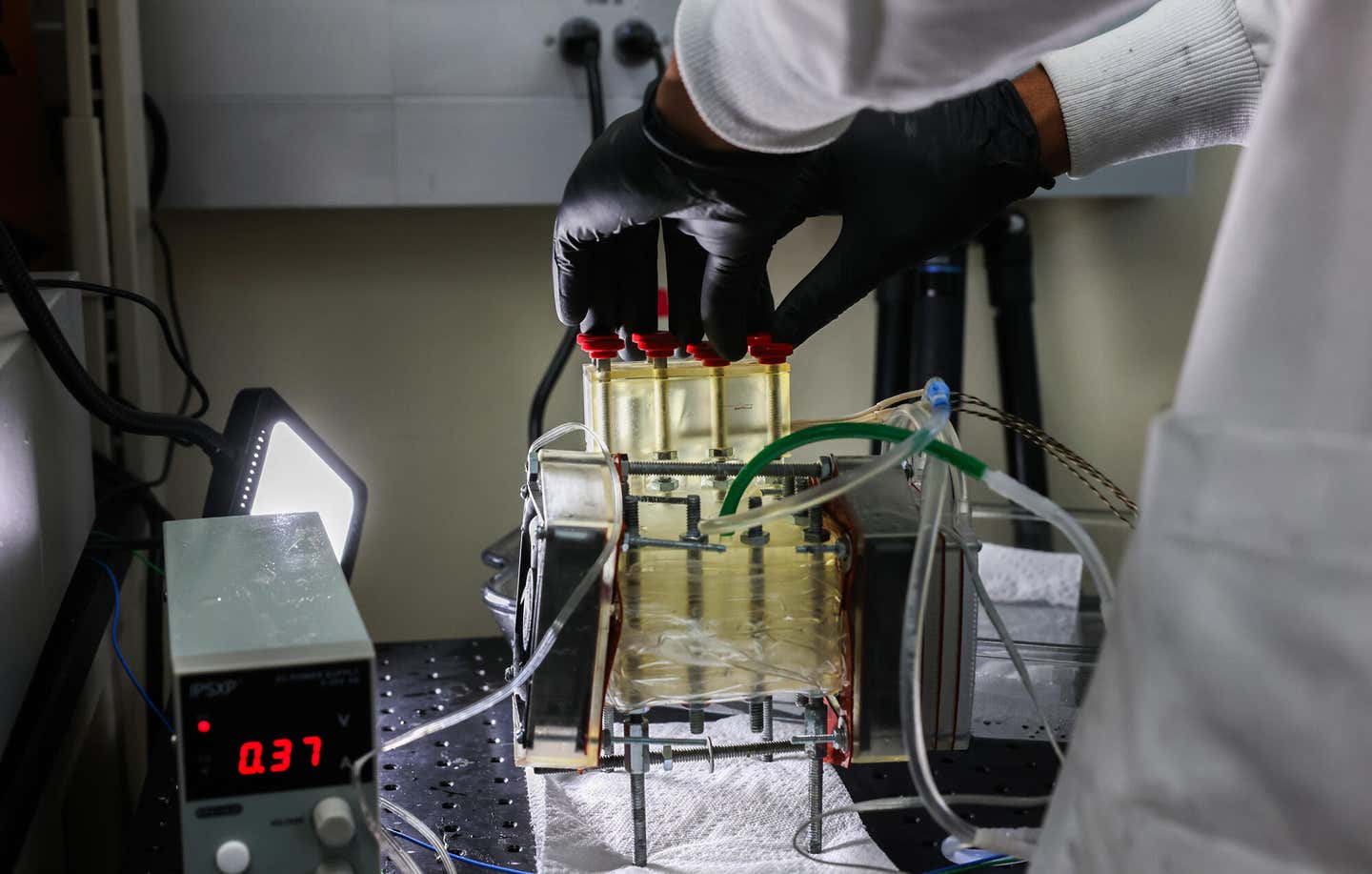Major tinnitus breakthrough offers new hope for millions
Study, which rigorously compared existing treatments, highlights low-level laser therapy as the most effective approach so far.

A constant ringing, buzzing, or hissing in the ears—tinnitus affects around 750 million people worldwide. (CREDIT: CC BY-SA 4.0)
A constant ringing, buzzing, or hissing in the ears—tinnitus affects around 750 million people worldwide. Though not a disease itself, this disruptive condition has no universally accepted treatment, leaving sufferers to navigate a maze of therapies with mixed results.
A recent breakthrough from Brazilian researchers at the Optics and Photonics Research Center (CEPOF) may offer new hope. Their study, which rigorously compared existing treatments, highlights low-level laser therapy and photobiomodulation as the most effective approaches so far.
Published in the Journal of Personalized Medicine, this research could reshape the way tinnitus is managed. It builds on decades of global data, including a European study that analyzed patient cases spanning 50 years, revealing the staggering scale of the issue.
Tinnitus: A Worldwide Inconvenience
Tinnitus stems from multiple causes, ranging from earwax buildup and poor circulation in the inner ear to more complex issues like bruxism and brain damage. Despite its widespread impact, no standardized treatment exists, and the FDA has yet to approve any drugs for the condition.
Dr. Vitor Hugo Panhóca, a CEPOF researcher, underscores the challenge: “Tinnitus is a very widespread symptom throughout the general population. It’s treated with a vast number of methods, from ear lavage to local anesthetics, antidepressants, antihistamines, antipsychotics, and sedatives, with different results.” The lack of a consistent solution underscores the urgent need for better treatment strategies.
To address this gap, Panhóca and his team conducted an extensive study on alternative and complementary therapies. Over four weeks, they examined treatment responses in more than 100 individuals aged 18 to 65. Participants, randomly assigned to ten groups, received different therapeutic interventions.
The findings offer strong evidence that low-level laser therapy and photobiomodulation outperform conventional treatments. By targeting affected areas with precise light wavelengths, these methods appear to stimulate cellular repair and reduce tinnitus severity.
Unlike pharmaceuticals, which often produce inconsistent outcomes, light-based therapies provide a non-invasive alternative with minimal side effects. Researchers believe this approach could soon become a primary treatment option for tinnitus sufferers.
Related News
These therapies included laser acupuncture, flunarizine dihydrochloride, Ginkgo biloba, and low-level laser stimulation of the internal auditory canal (transmeatal stimulation), both alone and in combination with various adjunct therapies.
Each patient underwent eight bi-weekly treatment sessions and was assessed using a "tinnitus handicap inventory questionnaire" featuring 25 questions. This questionnaire included a functional subscale with 11 questions addressing mental, social, occupational, and physical limitations due to tinnitus.
Upon analyzing the data, the researchers made several noteworthy discoveries. The most promising results were observed in patients treated with laser acupuncture alone and transmeatal low-power laser stimulation alone.
Notably, the latter group exhibited even greater improvement when the duration of laser irradiation was extended from 6 to 15 minutes. Additionally, combinations of laser therapy with vacuum therapy or Ginkgo biloba, as well as laser acupuncture alone and flunarizine dihydrochloride alone, also demonstrated lasting therapeutic effects.
Dr. Panhóca explained, "The positive effects include anti-inflammatory action and relaxation. We believe laser therapy can increase peripheral irrigation, which may be the main cause of the problem in many cases, as well as stimulating inner ear cell proliferation and collagen production." These findings suggest that low-level laser therapy may address underlying factors contributing to tinnitus.
Standardizing Treatment Protocols
While the efficacy of laser therapy in alleviating tinnitus is not entirely novel, the CEPOF study makes significant strides towards standardizing treatment protocols. This development holds great promise for healthcare professionals, including dentists, ear, nose, and throat specialists, and speech therapists, who treat tinnitus patients.
Currently, the literature lacks consensus on the optimal number of sessions and treatment intensity, making it challenging to provide consistent care.
Dr. Panhóca emphasized the importance of understanding successful therapies to streamline future treatments, saying, "Understanding how successful therapies work will help us focus on the most productive approaches in forthcoming studies. This is part of the learning curve when you innovate in health treatments like this." Additionally, long-term effects of laser therapy must be thoroughly investigated to ensure its safety and efficacy.
This pioneering study received support from FAPESP, which awarded a postdoctoral scholarship to Dr. Fernanda Rossi Paolillo, a key contributor to the research.
The study was conducted in collaboration with researchers at Irmandade Santa Casa de Misericórdia Hospital in São Carlos, University of Central São Paulo (UNICEP), and the Integrated Therapy Center in Londrina, Brazil. Furthermore, international collaboration with the Tyndall National Institute at University College Cork (UCC) in Ireland enriched the study's scope.
While further research is necessary to confirm the long-term efficacy and safety of laser therapy, these findings represent a significant step forward in the quest to alleviate the burden of tinnitus on those affected by it.
Note: Materials provided above by The Brighter Side of News. Content may be edited for style and length.
Like these kind of feel good stories? Get The Brighter Side of News' newsletter.
Joseph Shavit
Head Science News Writer | Communicating Innovation & Discovery
Based in Los Angeles, Joseph Shavit is an accomplished science journalist, head science news writer and co-founder at The Brighter Side of News, where he translates cutting-edge discoveries into compelling stories for a broad audience. With a strong background spanning science, business, product management, media leadership, and entrepreneurship, Joseph brings a unique perspective to science communication. His expertise allows him to uncover the intersection of technological advancements and market potential, shedding light on how groundbreaking research evolves into transformative products and industries.



